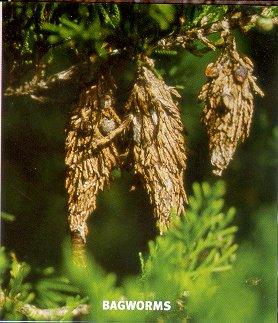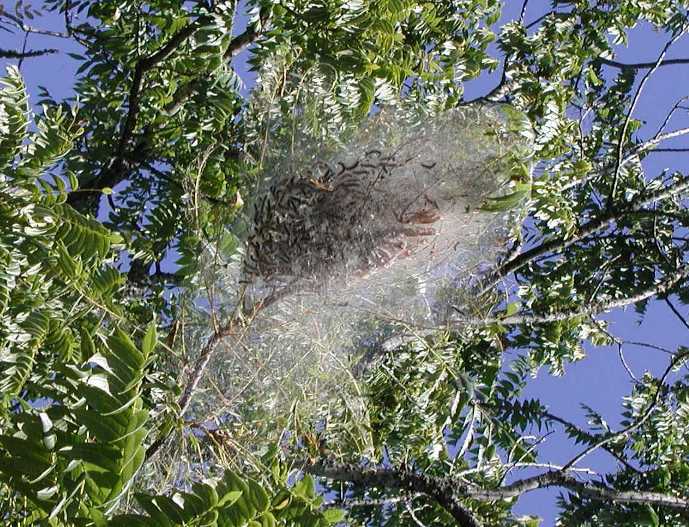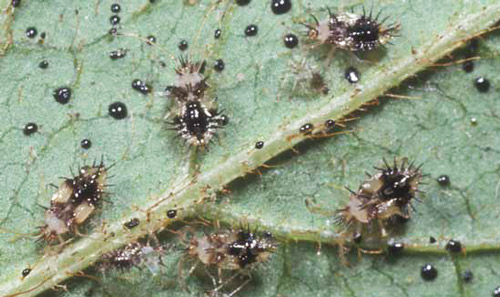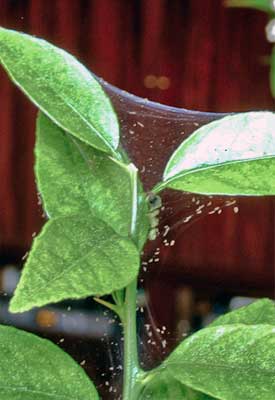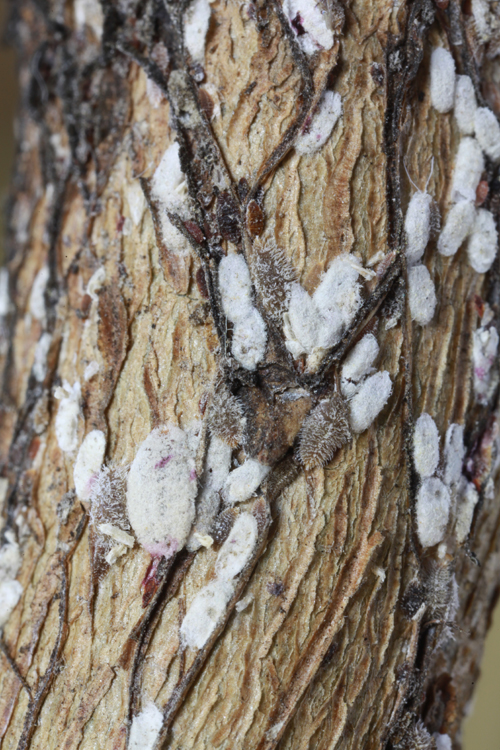Summer bugs are back! We are now seeing and treating the following bugs in trees and shrubs. 
Bagworms: These pests strip needles off junipers, cedars, cypress and other cone-bearing plants. They use those leaves to make canvas-like bags that hang from twigs and small branches. The worm leaves the cocoon at night to feed and returns to the cocoon during the day. 
Webworms: These pests make canopies of webbing material in the crotches of tree branches. Pecan, cedar elms, hack berry, and crape myrtles are often attacked, but this year they have ended up on many other plant species. The webs will become too large too remove by pruning. At that point, you would have to use high-powered spray equipment to get the insecticide through the webs – and the ugly webs would still be there. These don’t kill your trees, but, they just make them unsightly. Worms can also drop out of the web and onto patios and side walks. 
Lace bugs: You may not see the actual insects. You’ll see signs of their visits. Affected leaves of Boston ivy, azaleas, pyracantha, elms, bur oaks, chinquapin oaks, boxwood and lantana, among others, will be tan. You’ll be able to see their black waxy droppings on the backs of affected leaves. Treat with a general-purpose insecticide. 
Spider mites: These nearly-microscopic pests will cause damage similar to lace bugs, but you won’t see the black droppings. Affected leaves will turn light tan, then dead. you may even see fine webbing in the axils of leaves. Thump a twig over white paper to see the actual mites. 
Crape myrtle bark scale: The immobile insects resemble large mealy bugs and line the plants’ stems and twigs. They look like small, gooey popcorn kernels, and if you press against them, they exude red fluid. When left unchecked, the crape myrtle scales will begin to exude sticky honeydew secretions — basically processed plant sap, and the perfect substrate for black sooty mold. This fungus is disfiguring to leaves and stems, and many people worry about it. However, the real culprit remains the scale insects. To prevent mold, you must prevent or cure the scales. 
It’s not uncommon to spot another insect around the crape myrtle scales. In its immature form, it resembles a segmented pillbug, but it soon matures into a black ladybug with two orange-red spots on its back. If you see these insects on your plant’s stems and twigs, remember that they are very much your friends. Black ladybugs can clean up most of a scale outbreak in just a few weeks. There is a chance, of course, that you won’t be lucky enough to find the ladybugs. 
Aphids: Crape myrtle aphids are found from May through September, with peak populations during July and early August. Crape myrtle aphid adults and nymphs are pale yellow-green with black spots on their abdomens. They range from 1/16- to 1/8-inch in length. These aphids generally feed on the undersides of crape myrtle leaves. They feed by inserting their needle-like mouthparts into the soft tissues and extracting plant sap. As aphids feed, they inject saliva into the leaf tissues, which, in turn, causes yellow leaf spots to develop. Heavy infestations can deform leaves and stunt new growth. Buds, branch tips and flowers can also be damaged by the feeding injury. In addition to direct damage, aphids can damage plants indirectly by secreting honeydew, a sugary bi-product of their feeding. Honeydew is a perfect substrate for the growth of sooty mold fungi and a source of food for other insects such as ants, wasps and flies. Although unsightly, sooty mold itself does not directly harm the crape myrtle. Instead, it shades the leaves and interferes with photosynthesis. Under heavy infestations, sooty-mold-covered leaves may drop many weeks prematurely. Even the twigs and stems of the plants may be coated in the black sooty mold. That becomes more evident as the plants defoliate.
Call, text or submit an online request for bug treatment. Keep your tree and shrubs healthy.

